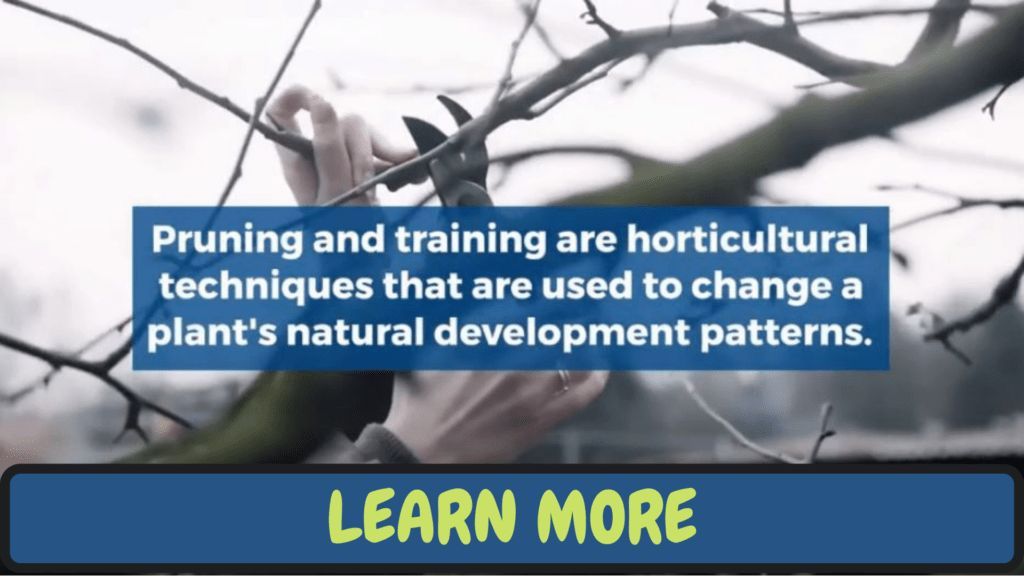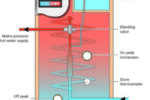The Role of Pruning in Tree Maintenance
Pruning and training are two techniques for altering the typical growth patterns of plants. Training focuses on the development and shape of the tree, whereas pruning focuses on the function and size of the tree. Pruning and training are horticultural procedures that modify a plant's natural growth pattern.
The primary mechanisms changing are apical dominance and the trees' natural blooming and fruiting characteristics.
In urban and suburban regions, woody plants and turf grasses are significant design features. Personal, practical, and environmental advantages accrue from trees and turf.
Tree Pruning
The following are some reasons why you should prune your trees: You may boost the tree's health by increasing air circulation within it. Because many pests and fungal spores prefer dark, wet, and warm environments, good air circulation helps keep apple tree pests and illnesses at bay.
Pruning a tree may aid in its growth and health while improving its beauty and protecting it from pests and disease. Trimming a tree is especially critical during the dormant season, which runs from late winter to early spring. Pruning shears are required for branches smaller than 1 inch (2.5 cm) in diameter; a hand saw is necessary for branches up to 4 inches (10 cm) in diameter.
When to prune
A tiny chainsaw can be used to cut through thicker branches. During trimming, remove any dead, diseased, or damaged branches, as well as any entangled or crossed downward-growing limbs or branches. Suckers, which resemble little stems that sprout from the ground or the tree's base, should be removed.
Many individuals wait until April to begin planning their landscaping projects. Nonetheless, experts recognize that getting a jump start in the autumn may make springtime maintenance more manageable and enjoyable.
There are a few critical steps to take when it comes to prepping your trees for colder weather. To avoid problems in their tracks, prune, control, nourish, and extend the pine method.
How to Properly Prune a Tree Limb
Despite their clear visibility, overhead utility cables are occasionally ignored. If you plant tall trees beneath or near these lines, your utility provider may be forced to remove them later to keep them safe from the wires. The tree may take on a unique aspect due to the pruning. Pruning a tree frequently may result in the tree's demise.
When trees grow too close to electricity lines, they might cause service interruptions. When children or adults contact the wires while climbing these trees, they can sustain serious injuries or even death. Proper tree selection and placement in and around overhead utilities may reduce potential public safety hazards, the reduction of utility and customer costs, and the enhancement of landscape aesthetics.
Should you top a tree?
Cutting the tops off trees to make them smaller is not an appropriate tree selection and planting method. This procedure, referred to as topping, can be exceedingly detrimental to your trees.
Tree trimming and pruning services eliminate hazardous and dead branches, making it a safe and practical assistance with various advantages. A skilled tree service can remove branches away from electrical wires and residences. Proper tree care can help prevent storm damage.
Pruning Thick Tree Branches
It is prudent to choose the location where you will begin cutting. To begin, thick parts should be cut. Cross-branch branches should be clipped to let sunlight reach all branches and to promote uniform air circulation throughout the branches.
Branches require enough air circulation and sunshine since being too close to other branches promotes fungal growth and provides an opportunity for insects to attack the tree. Clip branches that develop upward or toward the tree's center. These branches contribute to tree clutter and have an effect on the tree's health.
When trees mature into a thicket are compared to trees with an open, well-lit canopy, trees that mature into a thicket produce more fruit. Due to the fact that they are trees, they can grow to enormous heights, making harvesting difficult. Pruning is a procedure used to reduce or eliminate branches that have grown to an unintended height or length. Trees can be pruned to achieve a certain shape that is more fertile or visually pleasing in the environment.
Begin Pruning Trees As Soon As Possible
Fruit tree training begins with tree planting, as establishing the framework early on aids in the establishment of new plants. Rather than cutting trees later, it is more beneficial to teach trees early by producing limbs in a particular location. Plant hormones control the growth of fruit plants.
Cytokinin produced in the roots travels up the tree to the uppermost points to initiate dormancy. Auxin is created as buds develop on the ends of limbs. It descends the limb, restricting the production of lateral buds below the highest points, a phenomenon referred to as apical dominance. The most effective method of overcoming apical dominance is to educate branches to grow horizontally from the start and to remove undesirable upright stems.
Pruning young trees
Two to five years after planting, young trees should be pruned for the first time, and then every five to seven years following. Pruning is ideally performed in the winter to early spring (before new growth begins), as wounds heal fast in the spring, lowering the probability of insect and disease infestations.
From a safe distance, examine the curve of the tree and determine what needs to be trimmed. Consider how it will seem as it grows larger, and keep in mind that as the tree grows, the limbs will expand in diameter and length but will not migrate higher on the trunk.
Watering the New Tree
Trees and shrubs must be planted at the proper depth and get the proper quantity of water to establish and grow. Planting too deeply and watering too little or too much are two of the most common and dangerous planting blunders. The planting hole should never be dug deeper than the root ball's height in well-drained soil. As a result, the soil at the hole's bottom stays unaltered.
You probably feel that rainfall provides sufficient water for your trees most of the time. While this is true in general, it is especially critical to water your trees in the spring when the soil is moist and ready to absorb nutrients. As the weather warms, this will aid in the correct flowering of your tree and the establishment of healthy new leaf development. If you don't want to spend time manually watering the trees, a soaking irrigation system will provide water directly to the roots.
During the first few growing seasons, your newly planted tree will expend considerable energy establishing roots in the soil. Heat and drought will be particularly tough to manage throughout the first few seasons of your young tree's life. Watering the soil and covering it with wood chips might assist in facilitating this process. Deep watering may help in the formation of the root. The procedure of deep watering is to hydrate the soil to the depth of all the roots.
Mulching the New Tree
Two to three inches of bark mulch or pine straw should be used to completely cover the planting hole. Mulching helps conserve water while also controlling weeds. Allow the mulch to taper away from the tree's base without coming into contact with the trunk.
The most beneficial thing you can do for a tree is to properly mulch it. Mulching is the practice of covering the ground with debris in an area where plants are growing. Depending on the desired output, a variety of materials can be employed.
In natural ecosystems, trees shed their leaves and branches and then re-absorb these nutrients as bacteria, animals, and other species decompose them into the soil.
Tree Pruning Methods
When it comes to removing obtrusive limbs, it's tempting to attempt tree trimming on your own. On the other side, your tree improvement initiatives may endanger or even kill trees. Pruning and shaping a tree properly requires years of skill and the ability to maintain a vibrant and healthy tree. As a result, tree trimming should be performed only by certified tree care experts who use safe and effective procedures.
In tree management, arboricultural operations such as pruning, trimming, and felling/thinning are utilized. The tree care industry is largely concerned with the vegetation along roadsides, greenways, backyards, and parks. Professional tree care is also critical in landscape architecture and urban forestry.
At its most basic level, tree pruning is the removal of damaged, dead, or structurally weak limbs in order to improve the tree's health and lessen the risk of human or property injury from falling limbs. Advanced pruning techniques benefit the tree's structure and long-term health.
Best Tree Pruning Tools
 To trim your trees successfully, you'll need the proper equipment. The following are some helpful resources: Pruning shears, a type of scissors, are used by gardeners to cut foliage. This instrument is capable of handling huge branches and plants with ease. A pole pruner is a long device that enables you to reach and trim branches that are above your grasp. Carry goggles to keep the leaves out of your eyes.
To trim your trees successfully, you'll need the proper equipment. The following are some helpful resources: Pruning shears, a type of scissors, are used by gardeners to cut foliage. This instrument is capable of handling huge branches and plants with ease. A pole pruner is a long device that enables you to reach and trim branches that are above your grasp. Carry goggles to keep the leaves out of your eyes.
Simple pruning, such as cutting lower branches from small trees, is feasible by anybody familiar with plants and equipped with the necessary tools. Young trees should not be structurally trimmed from the ground unless they are pruned by competent personnel.
Removing bigger branches
Branches with a diameter greater than 112 inches require three successive cuts to avoid the trunk bark peeling. Make the initial incision around 15 inches away from the trunk on the underside of the branch. Cut the branch until it begins to descend and the saw becomes locked within.
Make a second incision, approximately 17 inches from the main stem, in the direction of the branch's top. No bark ripping will occur because the limb will split neatly between the two incisions.
To protect the dominant trunk, shorten or eliminate competing leads. This often needs a reduction cut on the longest branches. Reduced diameter cuts on weak clusters should not exceed 2-3 inches, whereas reduced diameter cuts on good compartmentalizers should not exceed 3-5 inches.
Brought To You By: https://www.kanshohtrees.com
The post What You Need to Know About Tree Pruning appeared first on https://vladpup.org
The post What You Need to Know About Tree Pruning appeared first on https://wookicentral.com
The post What You Need to Know About Tree Pruning appeared first on https://gqcentral.co.uk






Comments are closed